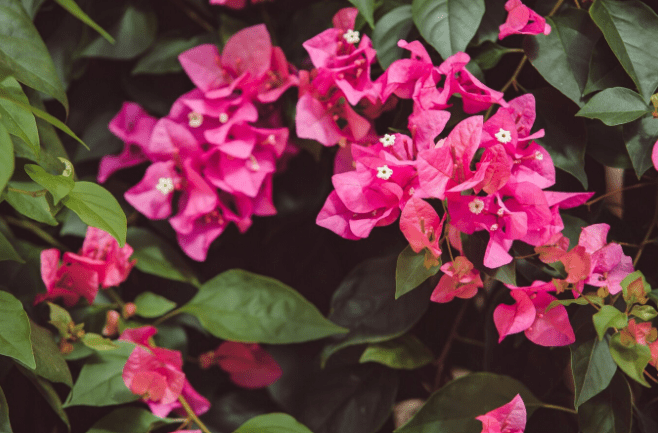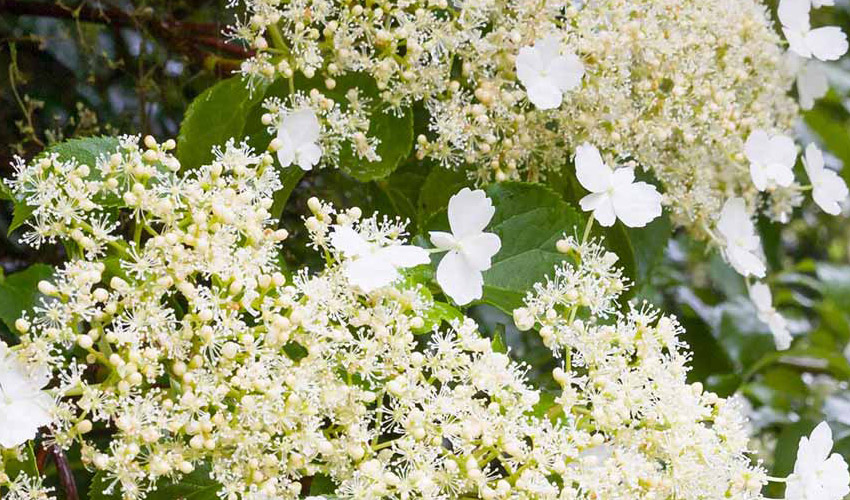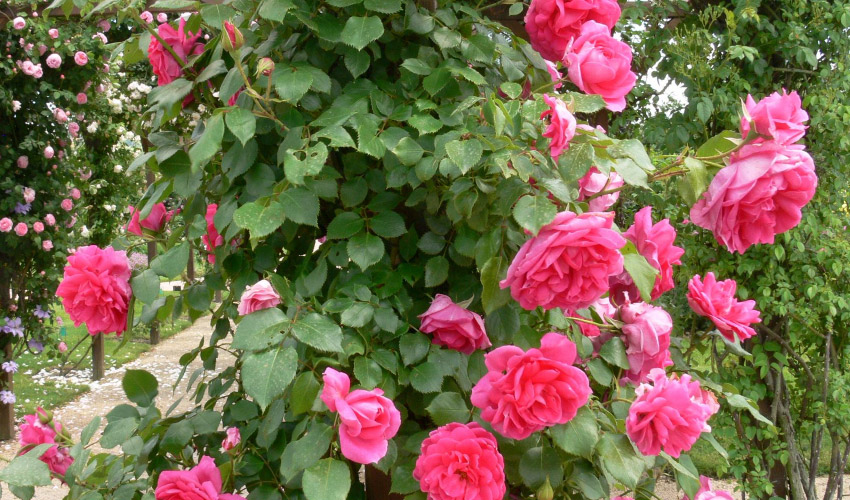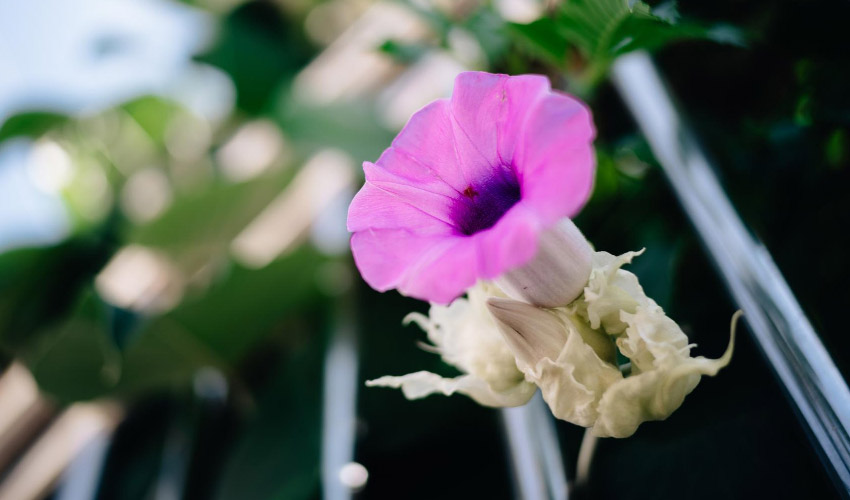Wisteria puts on a spectacular show each spring, bursting into masses of lavender-toned blossoms that grow on fresh stems. It’s time to trim the vine once the flowers fade or by late July. Pruning encourages better structure and more blooms in the following season.
Table of Contents
ToggleAbout Wisteria
Wisteria is a vigorous, long-lasting climber known for its dramatic, cascading blooms in shades of blue to deep violet. When trained over a pergola, arbor, or trellis, it creates a breathtaking floral curtain each spring and early summer.
That said, this vine grows quickly and aggressively, often stretching beyond 30 feet and becoming quite heavy. It will creep into cracks, gaps, or nearby structures, so it’s best to plant it well away from buildings or delicate garden features.
After blooming, the plant develops bean-like seed pods that linger into winter, adding texture to the garden. Since wisteria blooms on new wood, regular pruning is essential for flower production.
Wisteria contains lectin and wisteria in all parts of the plant. These substances are toxic to humans and pets if consumed. It potentially causes severe symptoms such as nausea, vomiting, or worse in large amounts. Always plant with caution and keep out of reach of children and animals.
When to Plant Wisteria
The best time to plant wisteria is in early spring or fall while the vine is still dormant. Planting during these cooler seasons gives the roots time to settle down before the stress of summer heat or winter chill.
Although you can grow wisteria from seed, keep in mind that seed-grown plants often take several years to bloom. For faster results, it’s best to buy a mature nursery plant or start with a healthy cutting.
Where to Plant Wisteria
Pick a spot that gets direct sunlight. While wisteria can survive in partial shade, it likely won’t bloom well without enough sun. Bright light is crucial for flowering.
- Use rich, moist soil that drains well.
- If your garden soil is poor, mix in some compost to improve it. Wisteria adapts to most soil types as long as drainage is good. You can explore how to improve soil and prepare it for planting.
- Choose an area away from other vegetation since wisteria grows fast and can easily crowd out nearby plants.
- This vigorous climber also tends to spread across nearby buildings like garages, sheds, or houses. To avoid damage, it’s best not to plant wisteria too close to your home.
- Wisteria vines need a strong support system to grow on. Think of solid wooden or metal trellises or pergolas. Fully grown vines can become so heavy that they snap weak supports, so build with durability in mind.
- Though wisteria trailing up a brick wall looks charming, be careful. Its strong vines will creep into any gap or crack they can find.
How to Plant Wisteria
- Create a hole as deep as the plant’s root ball and two to three times as wide.
- Place each vine 10 to 15 feet apart to give them room to grow.
Caring for Wisteria
To care for wisteria, begin each spring by blending a layer of compost around the base of the plant, followed by about 2 inches of mulch. This helps retain moisture and keeps weeds under control.
Many gardeners recommend using phosphorus to encourage blooming. In early spring, work a few cups of bone meal into the soil, and in autumn, mix in some rock phosphate. Others claim that liquid fertilizers made for tomatoes or roses can also boost flowering.
If your area gets less than an inch of weekly rainfall, water your wisteria regularly. (Place an empty food can outdoors and measure the water level using a ruler to track rainfall.)
To promote more blossoms, trim back the fast-growing shoots every few weeks during the summer.
Pruning
Just like with any plant, remove any damaged or dead branches as soon as you notice them.
Asian wisteria varieties need consistent pruning to maintain their shape. These aggressive growers spread through runners, so an annual trim is necessary to keep them in check. On the other hand, American wisteria grows more slowly and typically doesn’t need as much pruning.
Trim your wisteria twice a year:
Late winter: Cut back at least half of the previous year’s growth. Leave a few buds on each stem to ensure a good flower display. Avoid cutting mature vines too drastically. While they will regrow, it could take time for blooming to return to normal.
After flowering (late spring or early summer): Give the plant a second trim to neaten its appearance. Remove any wayward shoots to improve the overall shape and keep the vine looking tidy.
Common Problems
Since wisteria is toxic, deer usually leave it alone. It’s also rarely troubled by insect pests. Still, many wisteria growers run into one frustrating issue:
Why Wisteria Doesn’t Bloom
Wisteria often fails to flower because of too much nitrogen in the soil. Since this plant already fixes nitrogen naturally, adding nitrogen-rich fertilizer can throw things off. Instead of producing blooms, the plant may put all its energy into growing lush foliage.
- If excess nitrogen isn’t to blame, try a few other solutions to encourage flowering:
- Make sure you’re pruning your wisteria each year.
- Try root-pruning to reduce vigorous top growth and shift energy toward blooming.
- Move the vine to a sunnier location if it isn’t already getting full sunlight.






